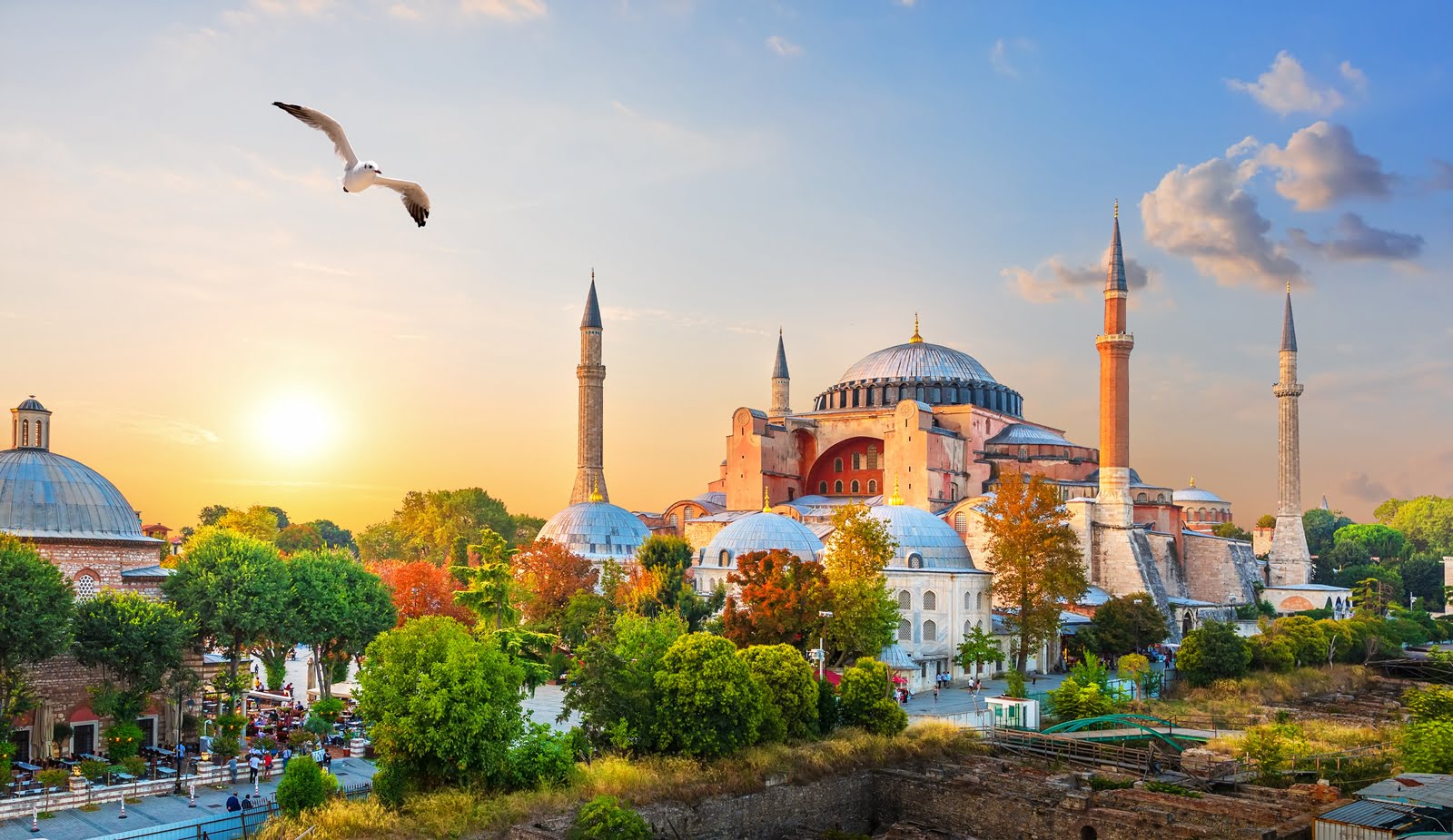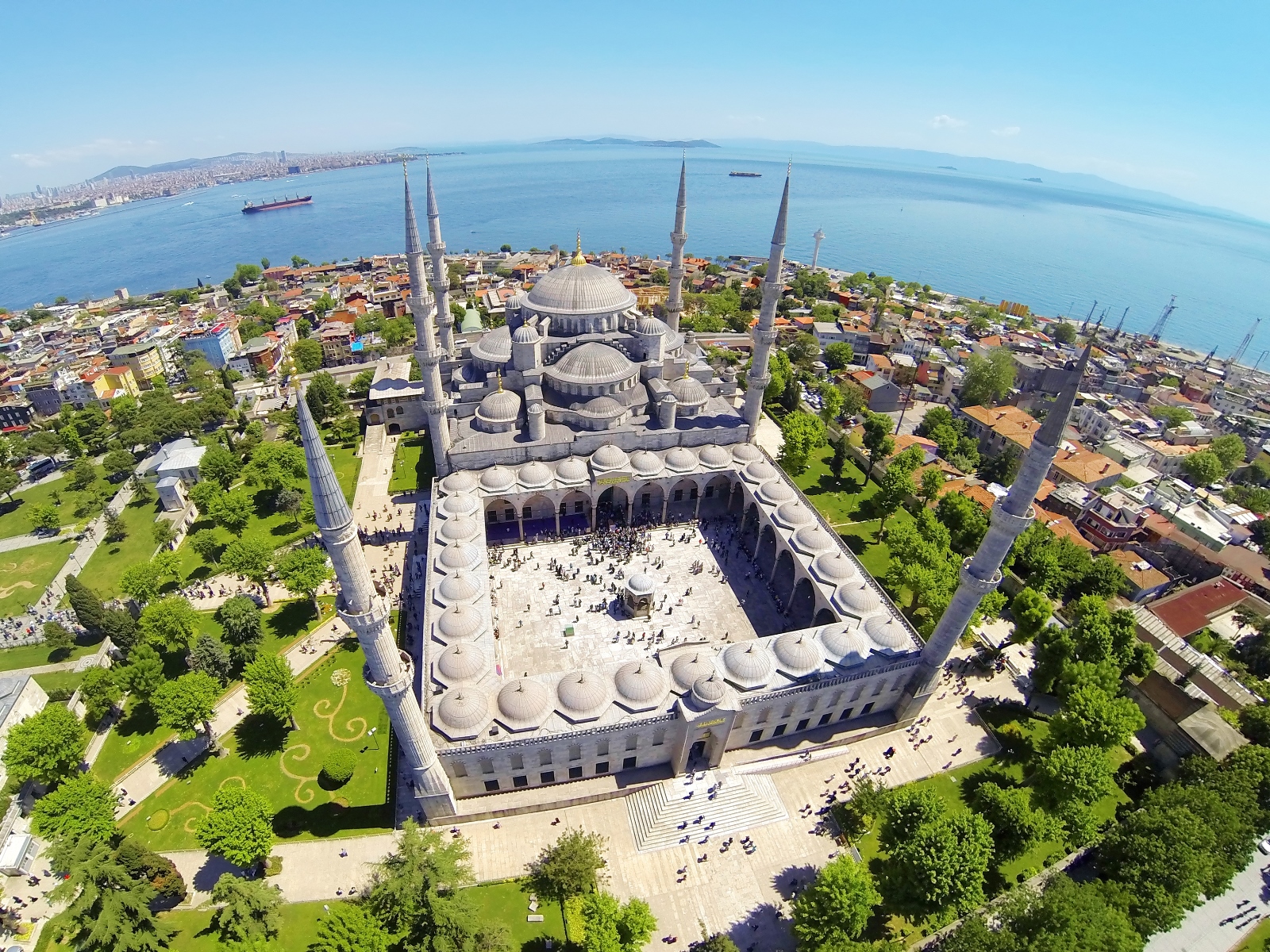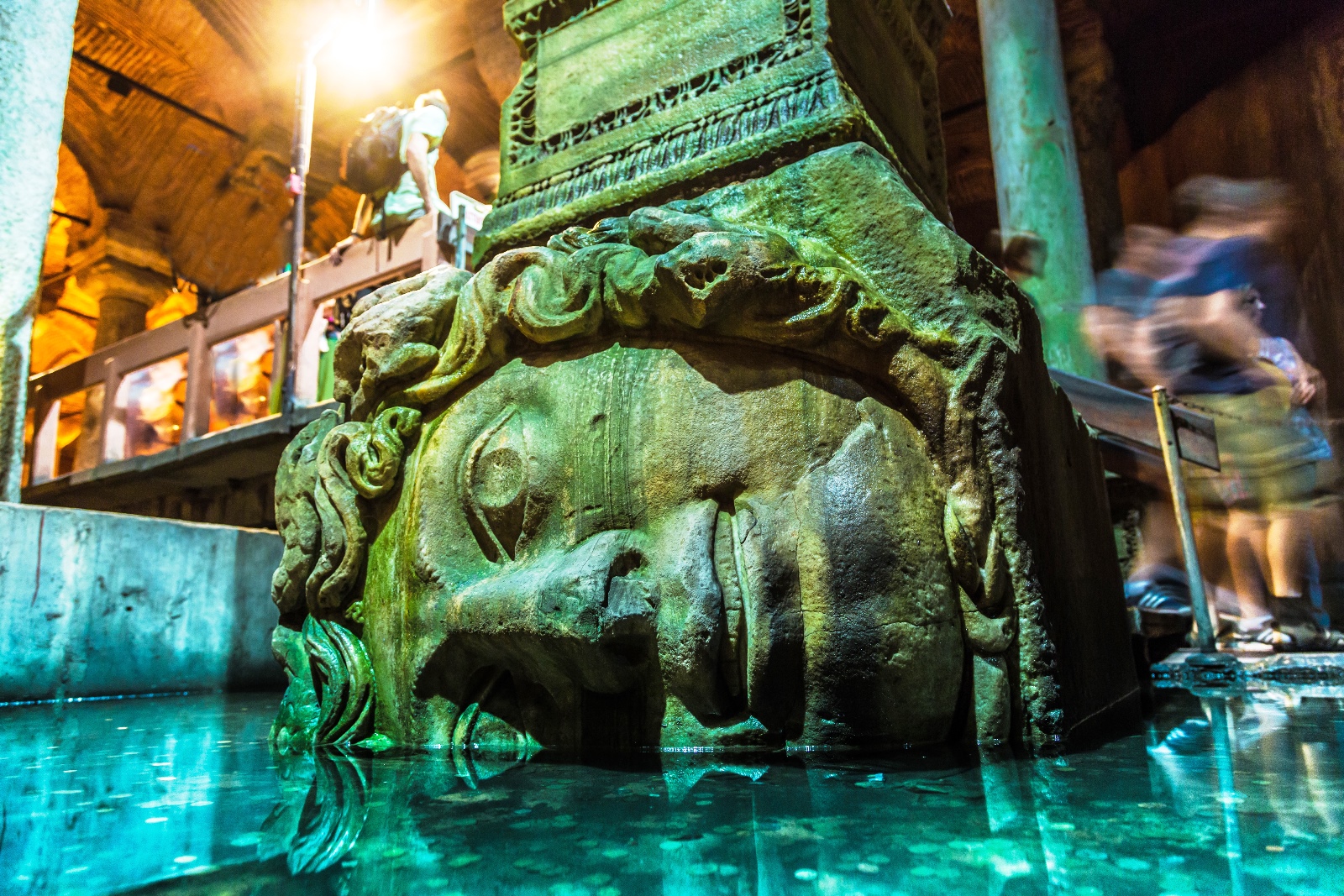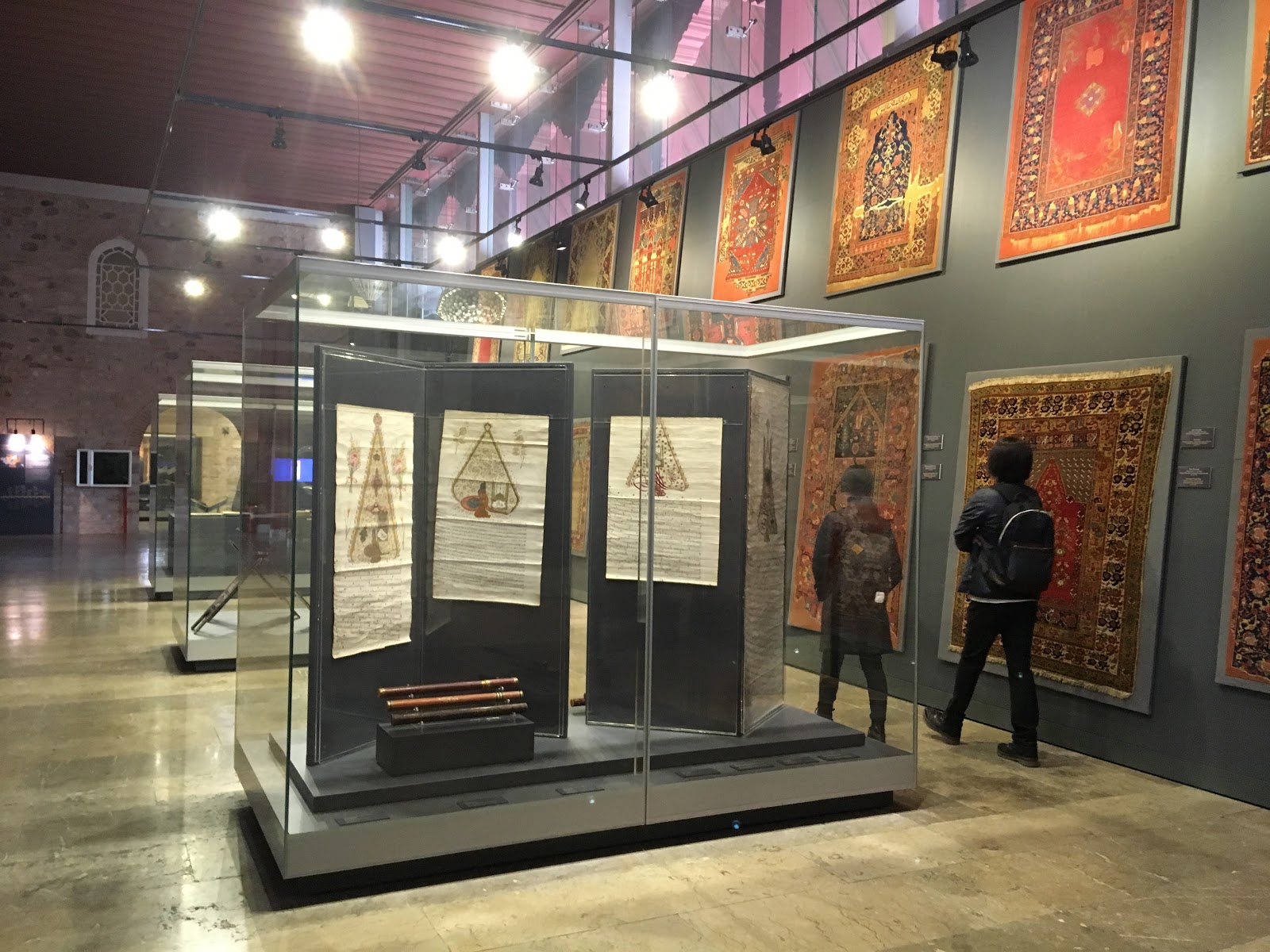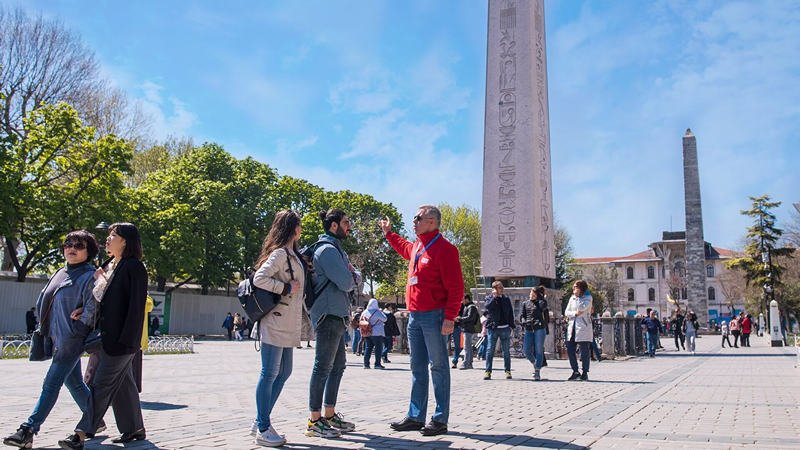Sultanahmet Square, also known as the Hippodrome of Constantinople, is the historic heart of Istanbul, home to some of the most iconic landmarks in Turkey. From the Hagia Sophia and Blue Mosque to the Basilica Cistern and Topkapi Palace, this area is a must-visit for history lovers and travelers exploring the city.
In this guide, we’ll cover everything you need to know before visiting Sultanahmet Square, including what to see, the best time to visit, and helpful tips to make the most of your trip.
Sultanahmet Square at a Glance
The Sultanahmet Square, also known as Hippodrome and surrounded by the famous Blue Mosque, Hagia Sophia Museum and Museum of Turkish and Islamic Arts, one of the most famous tourist areas in Istanbul, as well as a popular meeting point.

The area is very impressive tourist zone of the Sultanahmet neighborhood on the Historical Peninsula that leads to all historical sites around Sultanahmet. It is very well known place for all Istanbul visitors, where they mostly head on for first, on their first day of Istanbul visit.
The area in and around the Sultanahmet Square is the historic Istanbul and leads about all of the historical sights of Istanbul that include the must-see mosques such as the Blue Mosque, the museums such as famous Topkapi Palace Museum and Hagia Sophia Museum, historical sites and palaces. The compact and relatively traffic free area makes it easy to explore the region on foot.
Once being a Byzantium hippodrome, the square itself hosts the famous historic places and sights that include; the Egyptian Obelisk, the Serpentine Column, the Colossus or the Column of Costantine Porphyrgenitus and the German Fountain.
A Brief History
Sultanahmet Square has long been a focal point of Istanbul’s history, serving as the heart of both Byzantine and Ottoman rule. Originally the site of the Hippodrome of Constantinople, it was a grand stadium where chariot races, political events, and celebrations took place.
The Hippodrome was built in the 3rd century AD by Emperor Septimius Severus and later expanded by Constantine the Great in the 4th century. For centuries, it was the city’s main gathering place, witnessing royal ceremonies, sporting events, and even political uprisings.

One of the most dramatic events was the Nika Riots of 532 AD, where tens of thousands of people rebelled against Emperor Justinian I, leading to mass destruction across the city.
No Regrets Booking Advice
During the Ottoman period, the once-glorious Hippodrome fell into disrepair, and much of it was dismantled for new construction. The area was transformed into a public square, which later became known as Sultanahmet, named after Sultan Ahmet I, who commissioned the construction of the Blue Mosque in the 17th century.
Today, Sultanahmet Square remains a central gathering spot, surrounded by some of Istanbul’s most iconic landmarks, including the Hagia Sophia, Blue Mosque, Basilica Cistern, and Topkapi Palace. It has also been a site of modern political events, including protests and demonstrations in Turkey’s recent history.
Whether exploring its Roman roots, Byzantine grandeur, or Ottoman legacy, Sultanahmet Square offers an unforgettable glimpse into Istanbul’s layered past.
Top Attractions in Sultanahmet Square
Sultanahmet Square is the main point of the Sultanahmet district. You’ll see many tourists admiring the surroundings or taking photos in the square which proves us how admirable this place is.
You can see the Egyptian Obelisk, the Serpentine Column, the Colossus or Column of Costantine Porphyrgenitus, the German Fountain on the site of the Sultanahmet Square, which dates back to the 4th century hippodrome from the Byzantium era.
These three monuments are all lined up along the center of the ancient hippodrome area that the ancient racers turn around.
Hippodrome of Constantinople
✔ Once a grand Roman chariot-racing stadium, now a public square.
✔ Home to the Obelisk of Theodosius, Serpent Column, and the Walled Obelisk.
✔ The German Fountain, a gift from Kaiser Wilhelm II, is a great photo spot.
Tip: This area is completely free to explore—perfect for history lovers!
The Egyptian Obelisk (Obelisk of Theodosius)
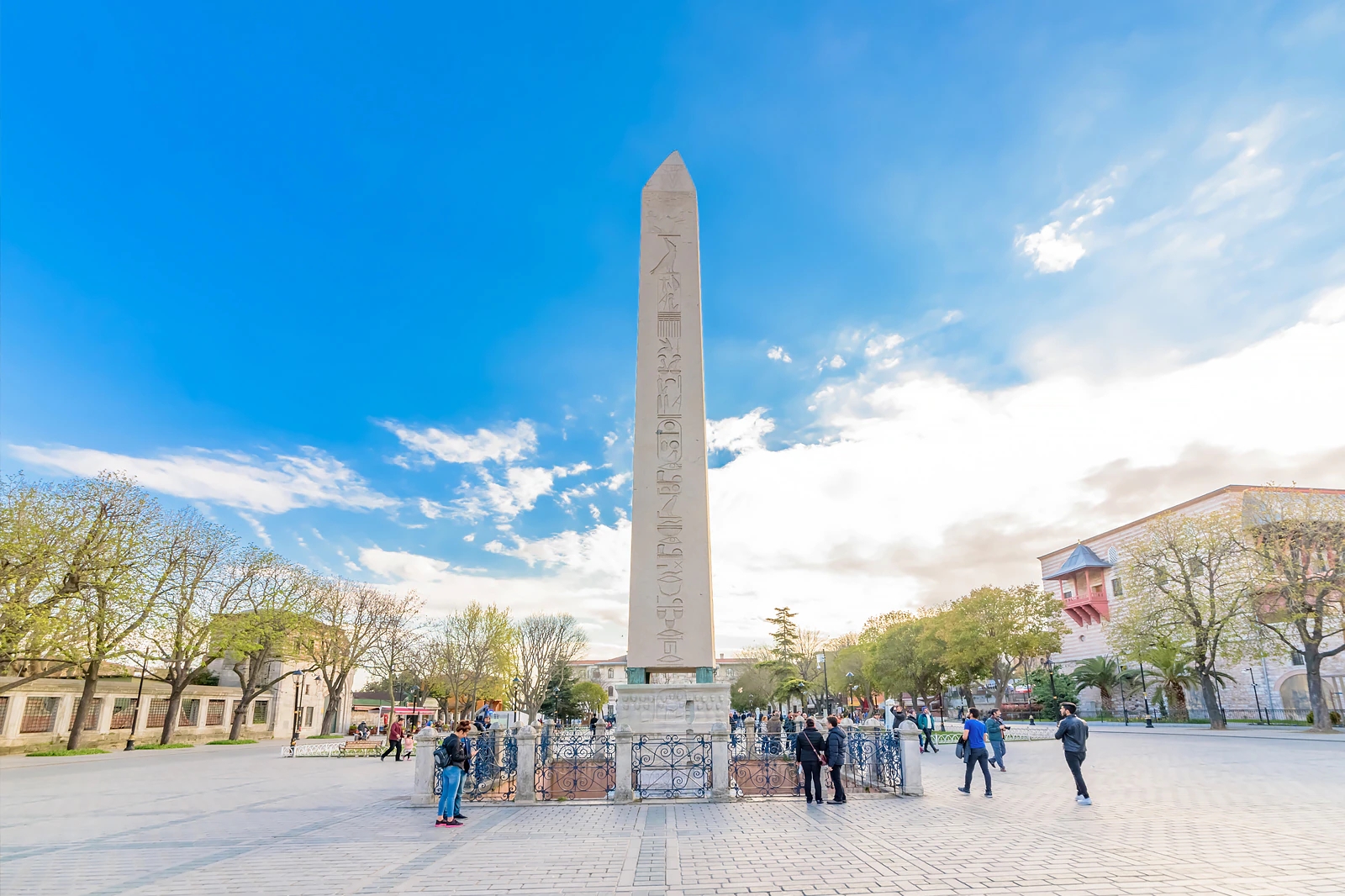
✔ Originally carved in Egypt during the reign of Pharaoh Thutmose III (15th century BC) and brought to Constantinople in the 4th century AD by Emperor Theodosius I.
✔ One of the most well-preserved ancient monuments in Istanbul, standing on a marble pedestal adorned with reliefs depicting Theodosius I and chariot races at the Hippodrome.
✔ The obelisk was originally much taller, but only its upper section remains today.
Tip: Look closely at the carvings on the pedestal to see detailed depictions of the Byzantine Emperor and spectators at the Hippodrome games.
The Colossus (Walled Obelisk)
✔ A 32-meter-tall stone column, believed to have been originally covered in gilded bronze plates, which were looted during the Fourth Crusade in 1204.
✔ Also known as the Walled Obelisk, it was built by Emperor Constantine VII in the 10th century and later restored by Ottoman rulers.
✔ Though its original appearance is lost, the structure still dominates the square with its imposing presence.
Tip: Imagine its former glory—this obelisk once shone brightly with bronze plates, making it one of the most impressive landmarks of its time!
The Serpentine Column
✔ One of the oldest monuments in Istanbul, dating back to 479 BC—originally part of the Delphi Temple of Apollo in Greece.
✔ Brought to Constantinople by Emperor Constantine the Great to symbolize Byzantine victory over the Persians.
✔ Features three intertwined serpent bodies, though the snake heads are missing—one of them is displayed at the Istanbul Archaeology Museums.
✔ Believed to have served as a protective talisman, guarding the city from evil spirits and insect invasions.
Tip: If you’re interested in ancient artifacts, visit the Istanbul Archaeology Museums nearby to see the last surviving serpent head up close!
The German Fountain
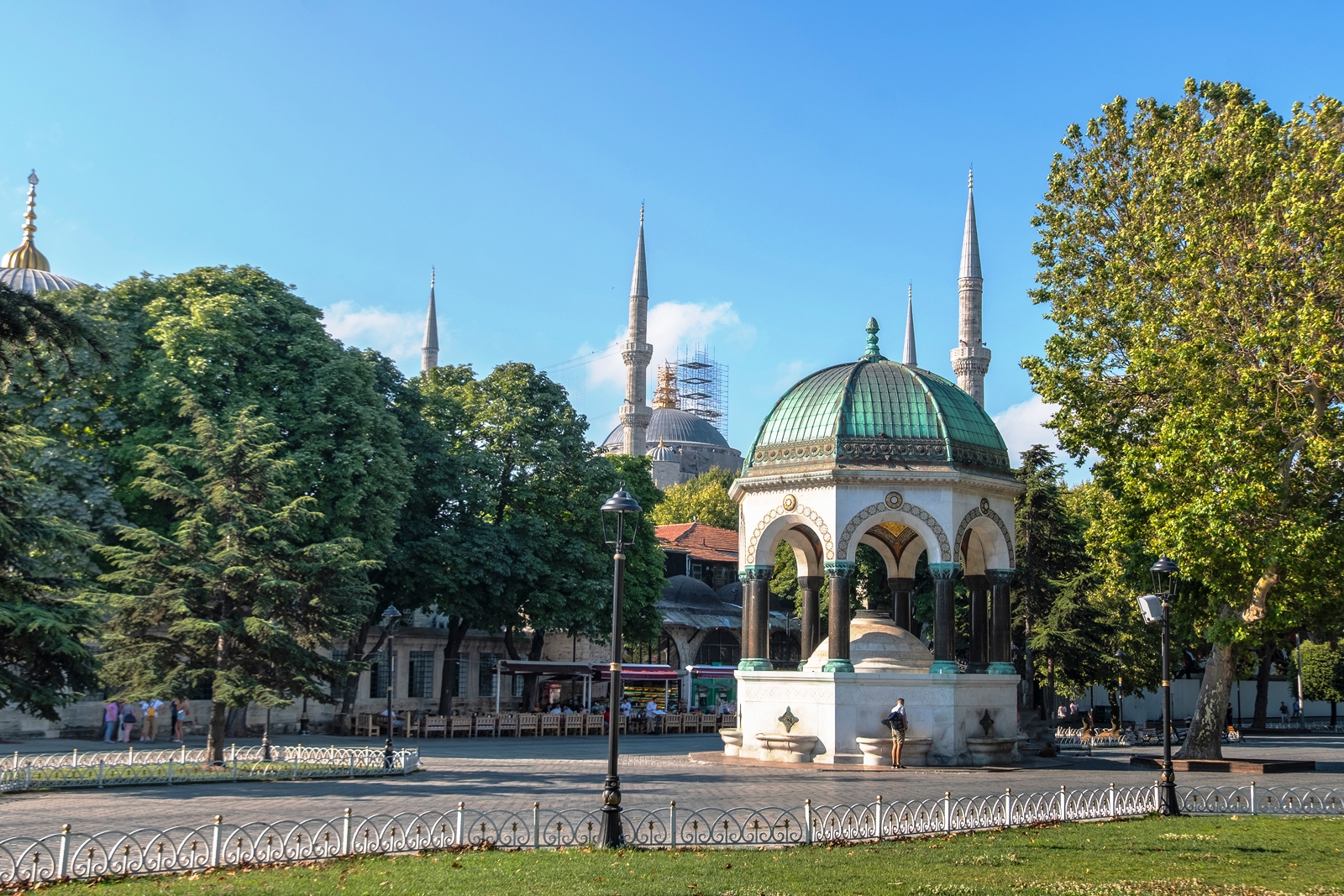
✔ A stunning neo-Byzantine fountain, gifted by Kaiser Wilhelm II of Germany to Istanbul in 1898.
✔ Built to commemorate the second anniversary of his visit, featuring a grand octagonal dome covered in golden mosaics.
✔ Though constructed in Germany, the design is heavily influenced by Islamic architecture, blending Ottoman and European styles.
✔ A popular resting spot in Sultanahmet Square, offering a beautiful backdrop for photos.
Tip: Stand under the fountain’s dome and admire the intricate golden mosaics, which reflect both German craftsmanship and Ottoman artistry.
Hagia Sophia
✔ Hagia Sophia, originally a Byzantine cathedral built in 537 AD, later converted into a mosque.
✔ Famous for its massive dome, stunning mosaics, and rich history spanning nearly 1,500 years.
✔ Now an active mosque, but visitors can explore it outside of prayer times.
Tip: Arrive early to avoid long lines, especially in peak season!
Blue Mosque (Sultanahmet Camii)
✔ Blue Mosque, built in the 17th century, this is one of Istanbul’s most stunning Ottoman mosques.
✔ Features six minarets, intricate Iznik tiles, and a grand courtyard.
✔ Open to visitors outside of prayer times—dress modestly and bring a scarf if needed.
Tip: Visit just before sunset to see the mosque beautifully lit up!
Topkapi Palace
✔ Topkapi Palace, the former home of Ottoman sultans, offering breathtaking views of the Bosphorus.
✔ See the Harem, Imperial Treasury, and Prophet Muhammad’s relics.
✔ Plan at least 2-3 hours to explore the entire palace complex.
Tip: Skip-the-line tickets are worth it—queues can be long!
Basilica Cistern
✔ Basilica Cistern, a massive underground water reservoir built by the Byzantines in the 6th century.
✔ Features medieval columns, dim lighting, and the famous Medusa Heads.
✔ A cool, atmospheric escape from the city’s heat.
Tip: Don’t miss the carved Medusa heads hidden at the base of two columns!
The Museum of Turkish and Islamic Arts
✔ Located in Ibrahim Pasha Palace, an elegant Ottoman mansion overlooking Sultanahmet Square.
✔ Features manuscripts, ceramics, calligraphy, carpets, and artifacts from the Ottoman, Seljuk, and Islamic periods.
✔ One of the best places to learn about Turkey’s rich Islamic heritage.
Tip: The museum’s collection of rare Turkish carpets is one of the finest in the world!
Hurrem Sultan Hammam

✔ A historical Turkish bath built in the 16th century by Mimar Sinan for Hurrem Sultan (Roxelana), the wife of Sultan Suleiman the Magnificent.
✔ Restored into a luxurious hammam, offering traditional Ottoman bath rituals, massages, and spa treatments.
✔ Perfect for those looking to experience an authentic Turkish bath in a historical setting.
Tip: Book in advance, as this hammam is very popular among visitors!
Visiting Sultanahmet Square Insider Tips
* You’ll be kinda contacted with several people while you stroll around Square for guidance requests. Don’t pay attention, don’t look in their eyes, and talk with beggars, and people coming beside and ask for helping with guidance around or for money.
* Keep an eye out for unofficial guides (guides should have official badge on).
* While you can explore the Sultanahmet Square FREE and without help of a guide, we can recommend you take a guided tour to experience the most of the history and sights of the Square from an official historian guide. And you can also avoid yourself from stupid guidance requests and beggars.
Guided Tours
This is the best and one of the cheapest options that we recommend especially for first time visitors. When you book you’ll get an email confirmation with meeting details and there your name will be checked by the official guide’s list with your confirmation number.
A Tour of Blue Mosque and Sultanahmet Square
This is offered by Istanbul Welcome Card and we highly recommend. You’ll discover and enjoy all the historical buildings from outside that surround the ancient imperial square of Istanbul. Between the monuments, your guide will take you through the ages of Istanbul – from antiquity to modern times.
During this tour, we will discover all the historical buildings from outside that surround the ancient imperial square of Istanbul. Between the monuments, your guide will take you through the ages of Istanbul – from antiquity to modern times.
Our website visitors will get 5% extra discount. Just click the red button below and make sure you see the discounted price on the official page.
Blue Mosque and Sultanahmet Square Tour & Historian Guide
Best Time to Visit Sultanahmet Square
✔ Early Morning (8:00 AM – 10:00 AM) – Best for quiet exploration and taking photos without crowds.
✔ Afternoon (12:00 PM – 3:00 PM) – Expect longer lines at major attractions.
✔ Evening (6:00 PM – 9:00 PM) – A magical time to see the Blue Mosque and Hagia Sophia lit up.
Tip: Fridays can be busy due to prayer times at the Blue Mosque—plan accordingly.
Nearby Attractions
✔ Grand Bazaar – One of the world’s largest and oldest covered markets (15 min walk).
✔ Spice Bazaar – A paradise for spices, Turkish delight, and teas (20 min walk).
✔ Gülhane Park – A beautiful green escape near Topkapi Palace.
✔ Bosphorus Cruise Pier – Take a scenic boat ride along the Bosphorus from Eminönü.
Tip: Combine your Sultanahmet Square visit with a stop at the Grand Bazaar or Spice Market for a full day of sightseeing!
How to Get There
Location
You’ll find Sultanahmet Square in the heart Sultanahmet neighborhood of Fatih district. See the location map.
Transportation
The most practical way to get to Sultanahmet is via Bagcilar-Kabatas tram (T1 line).
- The closest tram stop is Sultanahmet.
- Sultanahmet Square and most of the connecting roads are closed for vehicle traffic except tram and tour buses.
- From Taksim, take the funicular to Kabatas (from taksim Square) or funicular to Karakoy (from Tunel square) and than take the tram.
- If you stay at the Sultanahmet hotels, than you easily walk to the Square.
Is Sultanahmet Square Worth Visiting?
Absolutely! Sultanahmet Square is Istanbul’s most historic district, filled with legendary landmarks, rich history, and incredible architecture. Whether you’re exploring Byzantine and Ottoman wonders, enjoying local food, or just soaking in the lively atmosphere, this area is a must-visit on any Istanbul itinerary.
Best Case? Spend at least half a day here to fully appreciate its beauty!
